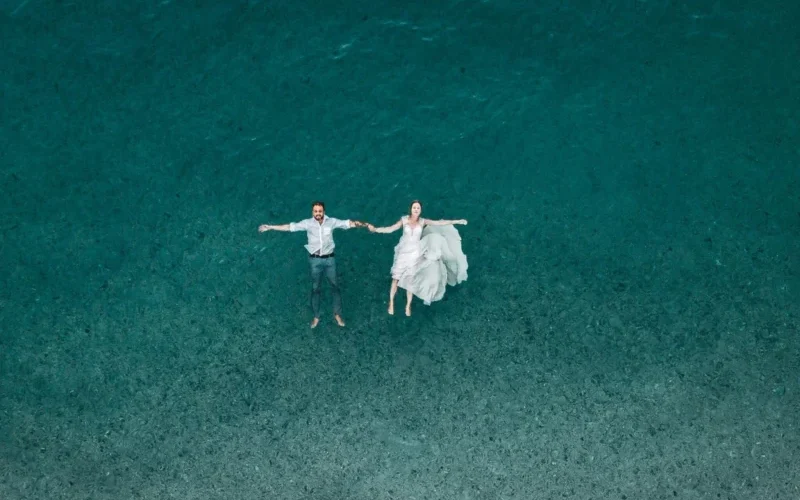Preparation and Pre-Wedding Planning
Thorough preparation is paramount to capturing stunning wedding moments. A detailed pre-wedding planning approach ensures that the photographer is well-prepared to handle any event or scenario on the big day. Meeting with the couple ahead of time is critical. This allows the photographer to understand the couple’s vision and preferences, creating a personalized photography experience that reflects their unique story.
Scouting the wedding venue is another indispensable step in pre-wedding planning. Visiting the location before the event day helps identify ideal shooting locations, understanding the lighting conditions, and noting any potential challenges. This enables the photographer to choose the best spots for both posed and candid shots. These preliminary site visits also offer an opportunity to discuss any specific requests or restrictions with the venue management, ensuring smooth operation during the actual event.
Equally important is the preparation of equipment. Ensuring that all cameras, lenses, and other gear are in perfect working order reduces the risk of technical issues. Carrying backup equipment, such as extra memory cards, batteries, and flash units, can be an absolute lifesaver. It is also a good idea to have duplicates of critical items to handle unexpected failures. For added security, bringing a laptop or portable storage device for immediate photo backups can prevent data loss.
Creating a comprehensive shot list is an essential aspect of preparation. Discussing in detail with the couple helps compile a checklist of all the must-have shots. This list ensures that no significant moments are missed, from the exchange of vows to candid reactions of guests. Furthermore, the list helps organize the day’s timeline efficiently, giving clarity on when and where to capture each important shot.
Lastly, having a backup plan for various contingencies, like weather changes or unforeseen delays, is indispensable. An alternative indoor location can be pre-arranged for outdoor ceremonies in case of rain. Flexibility and preparedness to adapt to changing situations ensure seamless coverage of the wedding day, no matter what surprises it may bring.
Understanding the Lighting
In wedding photography, lighting can make or break a shot. Therefore, understanding the various lighting conditions is crucial for capturing stunning wedding moments. Outdoor ceremonies often benefit from natural lighting, which can create beautiful, soft, and flattering images. However, the intensity and direction of natural light vary throughout the day, and being able to adapt to these changes is essential.
One of the prime times to capture outdoor photos is during the golden hour – the period shortly after sunrise or before sunset. This soft, diffused light casts a warm glow, highlighting the couple and creating a romantic ambiance. To make the most of this, positioning the subjects with the sun behind them or using it as a backlight can result in gorgeous and ethereal photographs.
On the other hand, midday sun can be quite challenging due to its harsh and direct nature, leading to unflattering shadows on the subjects’ faces. In such scenarios, using external lighting tools like reflectors can help balance the lighting. Reflectors bounce light back onto the subject, filling in shadows and softening the light for even exposure. Additionally, positioning the couple under shaded areas can mitigate harsh lighting conditions.
Indoor receptions often present another set of challenges due to low lighting. In such cases, external light sources such as flashes or continuous lights become indispensable. Using an off-camera flash can add depth and dimension to the photographs, while diffusers can soften the light to avoid harsh shadows. It’s also advisable to use a higher ISO setting on the camera, although care must be taken to manage the noise that comes with high ISO levels.
Shooting in dimly lit venues calls for a combination of adapted camera settings and strategic use of external lighting. Combining these techniques ensures clarity and vibrancy in photos, even in less than ideal lighting conditions. Mastery of lighting is thus a significant factor in delivering breathtaking wedding photographs, regardless of where the ceremony takes place.
Key Moments to Capture
Capturing stunning wedding moments involves more than just photographing the bride and groom in ceremonial poses; it is about preserving a rich tapestry of emotions and significant events that unfold throughout the day. The preparations of the bride and groom are particularly poignant, offering a glimpse into the anticipation and excitement before the ceremony. From the intricate details of the bride’s dress to the nervous smiles exchanged with close friends, these moments are filled with emotional depth and intimacy.
The “first look” is another pivotal moment to capture. This private encounter between the bride and groom before the ceremony often leads to some of the day’s most genuine and heartfelt reactions. It encapsulates the raw emotions and sets the tone for the rest of the celebration. Moving into the ceremony, several highlights demand the photographer’s attention: the entrance of the bridal party and the bride, the exchange of vows, the ring exchange, and the first kiss. Each of these moments is laden with emotional significance and deserves to be documented meticulously.
Candid guest interactions further enrich the wedding narrative. Guests’ spontaneous laughter, tears of joy, and the heartfelt hugs exchanged between loved ones provide a contrast to the formal proceedings, adding layers of authenticity to the wedding album. Photographers should remain vigilant for these serendipitous moments, ensuring that they are not overlooked in favor of more orchestrated shots.
The first dance and cake cutting are iconic traditions that also merit special attention. These events are symbolic milestones that echo the couple’s commitment and joy. Finally, any unique traditions or rituals specific to the couple’s cultural background should be preserved with equal fervor. These elements add a distinctive flair to the wedding and imbue the photographs with personal meaning.
Balancing posed shots with candid moments is crucial. While posed photographs capture the couple and the main participants in their most polished and elegant selves, candid photographs reveal the spontaneous and unscripted emotions of the day, resulting in a complete and authentic portrayal of the wedding.
Posing and Directing the Couple
Capturing a wedding is as much about the emotion and connection as it is about the technical expertise. When it comes to posing and directing the couple, striking a balance between spontaneity and direction is key. Start by ensuring that the bride and groom feel comfortable in front of the camera. Ease them into the photoshoot by engaging in light conversation, which helps to alleviate any nervousness they may feel.
One essential tip for posing the couple is to focus on natural and relaxed positions. Encourage them to interact with each other – a gentle touch, a soft kiss, or a warm embrace can evoke genuine emotions and create timeless images. Guide them into poses that accentuate their best features and highlight their chemistry, rather than stiff, formal stances. For example, positioning the bride slightly angled towards the camera can flatter her silhouette, while ensuring the groom maintains a relaxed posture.
Communication is imperative during this process. Give clear and gentle instructions, and use positive reinforcement to boost their confidence. Instead of giving rigid commands, suggest movements or actions they can perform together. Phrases like “Whisper something sweet in her ear” or “Walk hand-in-hand toward me” encourage authentic moments and sincere expressions.
Experiment with different compositions and angles to add variety to the photographs. Capture wide shots that encompass the scenic background, as well as close-ups that focus on the couple’s facial expressions and tender moments. Incorporating movement, such as walking or twirling, can add dynamism and bring the photos to life.
For group photos with the bridal party, maintaining control while keeping a fun atmosphere is crucial. Arrange the group systematically and suggest playful interactions to foster a lively ambiance. Ensure that everyone is visible and that the poses are natural yet cohesive. A fun and relaxed environment will shine through in the photos, resulting in cherished memories that the couple and their loved ones will treasure.
Candid Shots and Storytelling
Candid photography is a vital component for narrating the comprehensive story of a wedding day. Unlike posed or planned shots, candid photographs unveil the genuine emotions, spontaneous reactions, and authentic interactions among the couple and their guests. By capturing these unposed moments, photographers can create a narrative that resonates with both the subjects and the viewers, adding layers of emotional depth to the wedding album.
To master the art of candid photography, it is essential for photographers to blend seamlessly into the background. This can be achieved through discreet positioning, using long lenses to capture actions from a distance, and maintaining a low profile to avoid drawing attention. Additionally, familiarizing yourself with the wedding schedule allows you to anticipate key moments and be ready to shoot without being intrusive.
Employing a photojournalistic style not only adds authenticity but also transforms the wedding album into a compelling storybook. This approach involves capturing moments as they unfold naturally, emphasizing the spontaneity, emotion, and atmosphere of the celebration. For instance, photographing the quiet reflections of the bride as she prepares, the joyful laughter of guests, or the tender glances exchanged between the newlyweds during the ceremony, can significantly enhance the value of the album.
Moreover, paying close attention to details enriches the storytelling aspect. Capturing the intricacies like the wedding décor, exchange of vows, and candid expressions of loved ones contributes to a richer narrative. These elements work together to craft a complete and genuine portrayal of the wedding day, ensuring that the memories remain vivid long after the event has passed.
By focusing on candid shots and storytelling through a photojournalistic lens, photographers can produce wedding albums that are both authentic and emotionally engaging, providing couples with a timeless keepsake that mirrors the true essence and joyous spirit of their special day.
Post-Processing and Edit Techniques
Post-processing is a crucial phase in wedding photography that significantly enhances the appeal of the final images. It’s essential to maintain a consistent editing style to deliver a cohesive photo album that tells the story of a couple’s special day.
One fundamental aspect of post-processing is color enhancement. While it’s important to make colors pop, over-saturation can make the images look unnatural. Soft, warm tones often work best in wedding photography, and adjustments can be easily made using tools in Adobe Lightroom and Photoshop.
Preserving the natural look of photos is also critical. Over-editing, especially with skin retouching, can result in unrealistic images. Instead, aim for subtle enhancements that highlight the couple’s best features without altering their appearance. Lightroom’s brush tool is particularly effective for making precise retouches, smoothening skin texture, and removing minor blemishes.
Cropping is another fundamental technique that can dramatically improve the composition of wedding photos. By removing distracting elements, you can draw attention to the key subjects. The rule of thirds and leading lines are useful guides for cropping to enhance the visual flow and focus of an image.
Utilizing Adobe Lightroom and Photoshop can take your wedding photos to the next level. Lightroom offers powerful tools for organizing, editing, and batch-processing multiple images, ensuring consistency across a vast collection. Meanwhile, Photoshop allows for advanced retouching, layering, and detailed corrections that contribute to the overall perfection of an image.
The final step in the post-processing phase is delivering a high-quality photo album to the couple. This isn’t merely about providing digital files; it’s about creating a tangible keepsake that encapsulates the emotion and joy of their wedding day. Investing time in designing a visually appealing, high-resolution wedding album will leave a lasting impression and serve as a cherished memento for years to come.
Dealing with Unexpected Challenges
One of the key attributes of a successful wedding photographer is the ability to navigate unexpected challenges with poise. Weddings are dynamic events where unforeseen issues can arise, and having a well-thought-out plan can make all the difference. Consider the ever-looming threat of equipment failures. It is crucial to have backup gear, including extra cameras, batteries, and memory cards. This redundancy ensures that a single point of failure does not ruin a couple’s special day. Additionally, regular equipment checks and maintenance before the big day can preempt any technical issues.
Another potential challenge comes from the unpredictable nature of human interactions. Difficult family dynamics can create tension, which can affect the flow of the photography session. It’s vital to remain courteous and diplomatic, gently guiding individuals towards cooperation. Building rapport with key family members before the event can also alleviate some of the stress. By understanding family structures and personalities, a photographer can manage group shots and candid moments more effectively.
Time constraints are another common hurdle during weddings. The tightly packed schedule can leave little room for adjustments. Therefore, effective time management and clear communication with the couple and wedding planner are essential. Creating a detailed timeline that includes buffer periods for overrunning tasks can facilitate a smoother progression of events. If delays occur, prioritize crucial moments—like the exchange of vows or the first dance—over less critical shots.
Weather unpredictability, especially for outdoor weddings, can pose significant difficulties. Always have a contingency plan. Scout the venue in advance and identify potential sheltered spots for photography. Carry portable lighting solutions to compensate for gloomy weather. Embrace flexibility; sometimes, even inclement weather can provide unique and beautiful backdrops if approached creatively.
Experienced photographers recommend always maintaining a calm, adaptable demeanor. For instance, a photographer once shared how a sudden thunderstorm at an outdoor wedding led to relocating indoors. By swiftly setting up an indoor photoshoot area and keeping the bridal party engaged with positive energy, the photographer managed to capture stunning moments despite the challenge.
Effectively handling these unexpected challenges will not only ensure a smoother experience but will also reflect positively in the final photographs, truly capturing the essence of a beautiful wedding day.
Building a Relationship with Clients
Establishing a strong rapport with the couple and their families is pivotal for capturing stunning wedding moments. Effective communication plays a crucial role in this process, beginning from the initial consultation to the final delivery of photographs. Engaging in open and transparent conversations helps to align expectations and ensures a smooth experience on the wedding day.
Prior to the wedding, it is advisable to schedule meetings with the couple to understand their vision, preferences, and any special moments they wish to capture. This allows the photographer to plan and prepare adequately. Additionally, being open to questions and providing detailed explanations about the photography process helps build trust and confidence.
On the wedding day, maintaining a calm and composed demeanor is essential. Interacting warmly with the couple and their families fosters a comfortable atmosphere, enabling more natural and candid shots. Addressing concerns promptly and offering gentle guidance contributes to a stress-free environment, allowing the couple to enjoy their special day to the fullest.
Post-wedding communication is equally important. Keeping the couple updated on the progress of their photographs and providing timelines for delivery helps manage expectations. Offering a preview of a few select images can enhance their excitement and anticipation for the final gallery.
Establishing trust and a professional yet friendly relationship with clients not only leads to better photographs but also opens avenues for future referrals and business growth. Satisfied clients are more likely to recommend your services to their friends and family, thereby expanding your clientele base. A positive reputation built on effective communication and trustworthiness is invaluable in the competitive wedding photography industry.







